 Sensors Series - Part 10 - Wearable Biosensors
Sensors Series - Part 10 - Wearable Biosensors
The increasing demand for biosensors is a response to the growth of the healthcare market, technological innovation, an aging population, and the increased existence of serious diseases. Though biosensors are typically used to monitor fermentation systems and biocatalysts, they are also effective at detecting biological materials, such as enzymes, whole cells, and tissues. Because of this, wearable biosensors are being adopted rapidly within the healthcare industry. Wearable biosensors are devices that are designed to report physiological data in real-time, using biochemical markers for measurements. They enable an individual's body parameters to be monitored locally or remotely, making it possible to share information with healthcare providers in real-time. This is especially useful for the growing elderly population. The growing demand for point-of-care testing, personalized medicine, cost-effective lab tests, and integrated analytical systems brings new opportunities for innovation. This learning module discusses the basic concepts of wearable biosensors, including their types, operation and applications.
Related Components | Test Your Knowledge 
2. Objectives
Upon completion of this module, you will be able to:
- Describe wearables and biosensors
- Understand the basic concept and operation of both wearables and biosensors
- Discuss the different types of biosensors
- Explain how different biosensors are applied in wearables
3. Basic Concepts
A sensor is a device that converts a stimulus or signal, such as heat, pressure, or motion, into a quantifiable electrical signal. A biosensor performs a similar function, recognizing specific biological or chemical analytes. Biosensors contain elements called bioreceptors, molecules that recognize specific analytes. Examples of bioreceptors include enzymes, antibodies, tissues or cells, or DNA/RNA.
Biosensors are used in applications such as disease monitoring, pollutant detection, and drug discovery. They are classified into different groups based on the signal transduction method: optical, electrochemical, thermometric, piezoelectric, or magnetic.Figure 1 shows a block diagram of a typical biosensing mechanism. The biological element interacts with the analyte, and the transducer converts the biological responses into an electrical signal. A signal conditioning circuit receives the transducer output, processes it, and displays the results.

Figure 1: A typical biosensor block diagram
Wearables are electronic devices that can be worn comfortably on the body. Common wearables include smartwatches, clothes, smart glasses, patches, and rings. Wearable biosensors are devices that assist in monitoring vital biological parameters and are used to track daily life activity. Their use enables the continuous and constant measurement of biometric data. The real-time information that is collected can then be sent wirelessly to healthcare providers or monitors.
4. Analysis
In this section, we will discuss various biosensors from different manufacturers and analyze their operating principles, features, and uses.
- 4.1 Optical Sensors (SFH Series) from AMS OSRAM
The SFH series sensors from AMS OSRAM are compact optoelectronic devices that use LEDs and photodiodes to monitor heart rate and oxygen saturation. The LED transmits light through the veins and arteries. The body’s pulse creates pressure that causes a change in volume, changing the way the veins and arteries transmit or reflect this light. The photodiode measures the transmitted and reflected light, providing information about the heartrate. Figure 3 illustrates this sensing mechanism.
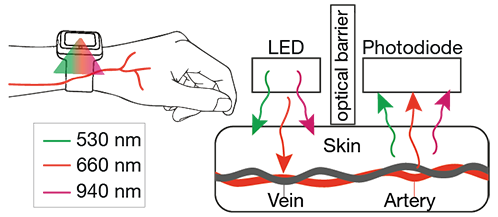
Figure 3: Heartrate monitoring and oxygen saturation measurement with an optical sensor
Oxygen saturation is determined by measuring the hemoglobin absorption in the blood. Oxygenated hemoglobin (HbO2) absorbs light differently than non-oxygenated hemoglobin (Hb). Non-oxygenated hemoglobin (Hb) absorbs greater amounts of red light, with wavelengths around 660nm. Oxygenated hemoglobin (HbO2) absorbs larger quantities of infrared light, having wavelengths around 960nm. In order to measure oxygen saturation, red and IR LEDs illuminate the skin and a photodetector measures the difference in absorption. The following formula is used to calculate the SpO2 (oxygen saturation) level through the use of different absorption levels (Hb vs. HbO2):

The SpO2 value is the quotient of the measured values.
The absorption of light in human blood is primarily dependent on the hemoglobin’s oxygen content. Figure 4 illustrates the absorption spectra of human blood, comparing the absorption of hemoglobin (Hb) and oxygenated hemoglobin (HbO2) at various wavelengths of light. It also includes the spectral responsivity of the photodiode.
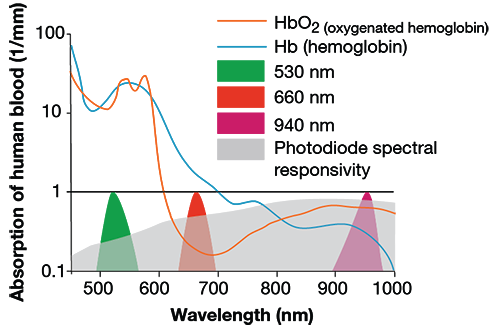
Figure 4: Light absorption of human blood versus wavelength of light
There is more absorption occurring at shorter wavelengths (from blue to yellow), which indicates that green light works the best for heart measurement applications. Red and infrared light can be used for areas that have a higher arterial blood concentration, such as the fingertips, ears, and forehead. Pulse oximetry applications can also use longer wavelength light (from red to infrared).
The SFH 7050 is an integrated module containing a pulse oximeter and heart rate monitor. Figure 5 illustrates the different functional blocks of this health monitoring system.
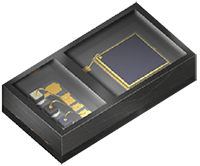

Figure 5: SFH 7050 Opto sensor and functional block diagram
- 4.2 SpiroQuant H Flow Sensors from Honeywell

Figure 6: SpiroQuant H Flow Sensors
Honeywell's SpiroQuant Type H flow sensor is a differential pressure converter designed for medical applications, specifically the measurement of breathing gas flow. It is a passive flow sensor and must be connected to a compatible differential pressure gauge.
- 4.3 SpiroQuant A+ Flow Sensors from Honeywell
Honeywell's SpiroQuant A+ flow sensors measure the volume of gas flow within anesthesia machines and ventilators. They operate on the principle of constant temperature hot-wire anemometry, which states that the amount of heat removed from a temperature sensor by a flowing fluid or gas can be used to determine the fluid's velocity. As the temperature of the wire goes down, so does the resistance of the wire. The change in resistance can be measured with a Wheatstone bridge.



Figure 7: SpiroQuant A+ Sensor used with SpiroQuant MAX Module
The SpiroQuant A+ Sensor works in conjunction with the SpiroQuant MAX Flow Module. The module functions as the sensor's signal conditioning circuit. The module operates in constant temperature mode and generates a signal proportional to the actual flow value.
Figure 8 depicts how flow data is displayed on the system.
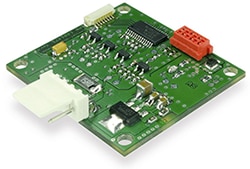
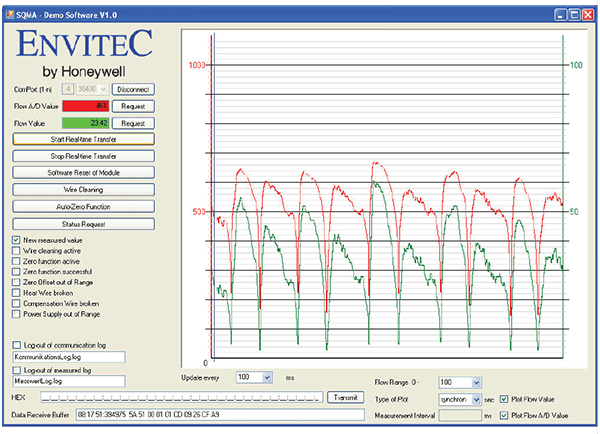
Figure 8: SpiroQuant MAX Module and Flow Data displayed on demo software
- 4.4 Human Body Temperature Sensor (MAX30205) from Maxim
Maxim's MAX30205 is a temperature sensor that measures body temperature and provides patient information to health care workers. Human body temperature is a primary indicator for metabolic health. This device is a simple-solution for wearable fitness and medical applications.
The MAX30205 temperature sensor on Maxim's MAXREFDES100# Health Sensor Platform (HSP) accurately measures the patient's external temperature. The MAX30205 converts temperature measurements to a digital form using a high-resolution, sigma-delta, analog-to-digital converter (ADC). Its accuracy meets ASTM E1112, the standard for clinical thermometry specified by ASTM International. Data is output with the standard I2C communication protocol, simplifying integration.
Figure 9 depicts a typical application circuit of MAX30205.

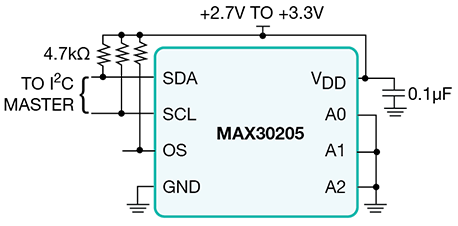
Figure 9: MAX30205 typical application circuit
- 4.5 MR magnetic sensors from TDK
The spintronics-type MR Magnetic Sensor from TDK is a compact biomagnetic sensor that measures weak biomagnetic signals, such as cardiac magnetic fields. As shown in Figure 10, the MR element is comprised of a thin film of non-magnetic material placed in between two thin ferromagnetic films. One of the ferromagnetic films is a free layer. The direction of magnetization in the free layer follows the direction of the external magnetic field. The other ferromagnetic film is a pinned (or fixed) layer. The resistance of the element changes with the difference in the direction of magnetization between the free and pin layer, allowing magnetic field intensity to be determined from the magnitude of the current. Spintronics-type magnetic sensors were developed by application of thin-film technology, originally cultivated through the manufacture of hard disk drive (HDD) heads.
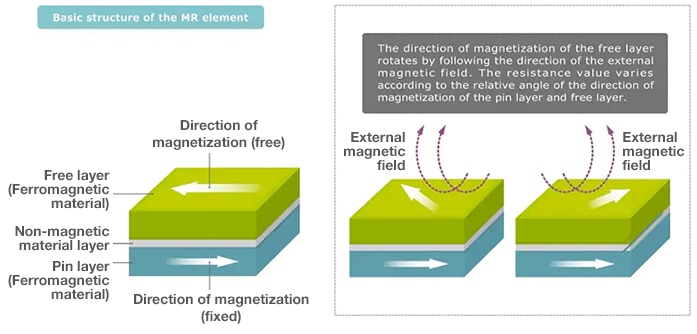
Figure 10: Basic structure and sensor principle of the MR element
- 4.6 MEMS Accelerometer (ADXL362) from Analog Devices
The ADXL362 MEMS accelerometer from Analog Devices is a complete 3-axis acceleration measurement system. With a power consumption of less than 2 µA at a 100 Hz output data rate and 270 µA when motion triggered into wake-up mode, the ADXL362 is well-suited for use in battery-powered wearable devices. It is capable of detecting anomalies in human motion, including an unsteady gait, concussion, or a fall. It can even monitor posture while the subject is at rest. The accelerometer communicates with standard SPI protocol. It has built-in digital logic for autonomous operation and system-level power savings.
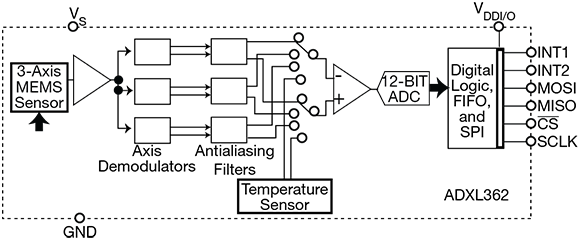
Figure 11: ADXL362 Digital Output MEMS Accelerometer
- 4.7 Sleep Monitor Strip from TE Connectivity
The sleep monitor strip from TE Connectivity is a strip of Piezo film (piezoelectric PVDF polymer) that is 800mm long and 8mm wide. With a thickness of just 50 microns, the polymer strip is highly flexible and when placed under the body, is nearly imperceptible. The sleep monitor strip produces a charge or voltage output when subjected to dynamic strain (change in length). It is capable of detecting sounds from the heart, changes in load, or changes in center of gravity caused by breathing. An examination of these signals over an extended time can indicate duration, phase, and quality of sleep. It requires no external power and is suitable for use with battery-operated equipment.

Figure 12: 10184000-01 Sleep-tracking Sensor from TE Connectivity
Signals from a piezoelectric source can be measured either by the generated charge (Q) or the voltage (V). As long as the sensor is not connected to anything else, these measurements directly relate to the sensor element's capacitance (C). This means Q = C×V or V = Q/C.
- 4.8 Three-Axis Inclinometer (SCL3300-D01) from Murata
The SCL3300-D0 inclinometer is a 3-axis accelerometer designed for use in bed sensors. Its technology is based on the Ballistocardiographic (BCG) principle; when the heart pumps blood, there is a recoil motion in the opposite direction. The ultra-sensitive accelerometer captures this micro-movement and sends it to the BCGMCU-D01, a microcontroller with specially designed algorithms that extract heart rate and many other vital signs from the signal.
The system provides vital signs such as heart rate, respiration rate, and heart rate variability (correlates to stress level). It also provides relative stroke volume information (how much blood the heart pumps) and indicates bed status (empty bed, patient in bed, patient moving in bed). Figure 13 depicts a typical output signal from the SCL3300-D01.

Figure 13: An application of Inclinometer (SCL3300-D01) with presentation of BCG signal
The SCL3300-D0 provides angle output based on Murata's capacitive 3D-MEMS technology. As a wearable biosensor, its features include tilt sensing, structural health monitoring, and a positioning and guidance system.
5. Application
Biosensors are present in various fields, from healthcare and food to environmental applications. In this section, we will discuss various applications where biosensors are used.
- 5.1 Driver Monitoring Systems (DMS)
Human error is one of the primary causes of traffic accidents; these include speeding, drunk driving, and moving traffic violations. Fatigue and distractions are major contributors. A driver monitoring system (DMS) continuously monitors the driver at all times, playing a role in making the roads safer.
One principle of a DMS is to monitor the eyes of the driver. This is how it works. An infrared (IR) emitter transmits IR light, which is reflected by the cornea of the driver’s eyes. A camera equipped with a CMOS image sensor captures the reflected IR. The eye movement is tracked, and the motion used to determine if the driver is alert and focusing on traffic. Pupil size can be used to indicate the vigilance of the driver. In addition, the driver's eyelid movement is an indicator of fatigue.
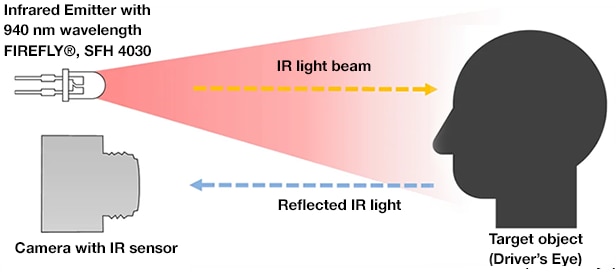
Figure 14: Eye-tracking with FIREFLY®, SFH 4030 IR emitter
Figure 14 illustrates a DMS that uses an IR emitter and an IR sensor camera to track the driver's eye movement.
Eye-tracking requires a high-quality lighting system. The light source must be powerful enough to accomplish its task in daylight, but soft and diffuse so that the driver’s eyes are not irritated. OSRAM's FIREFLY® SFH 4030 infrared emitters, with a wavelength of 940nm, are now firmly established for this purpose. They are compact in design, powerful, and support a variety of beam angles. They include VCSELs (vertical-cavity surface-emitting laser), a compact, reliable light source that produces the desired light distribution. The VCSELs emit a very narrow band of light, minimizing the undesirable red glow effect of infrared light. Additionally, VCSELs can be used for facial recognition. In addition to safety features, facial recognition can be used for features of convenience, such as adjusting the seat position or mirrors for each driver.
- 5.2 Sleep Monitoring Systems
Sleep monitoring systems use sensors that are capable of monitoring physiological parameters, such as heart and breathing rate, in conjunction with environmental conditions, such as temperature and humidity. According to the Mayo Clinic, obstructive sleep apnea is the most common sleep-related breathing disorder. With sleep apnea, a patient's breathing pattern is repeatedly interrupted. Patients with sleep apnea sometimes snore and often feel tired even after a whole night's sleep. Sensors used in this system can track sleep or breathing-related variables such as body movements, blood oxygen levels, and airflow.
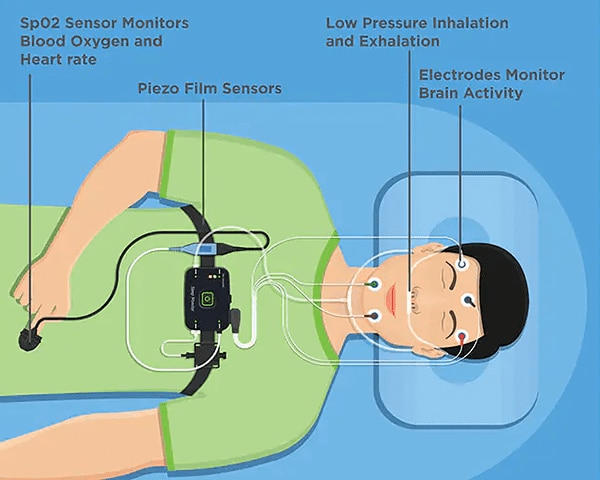
Figure 15: Sleep monitoring system
Figure 15 shows a range of sensors for monitoring sleep, which include the following:
- A piezo-film sleep sensor with sleep monitoring function keeps track of physical activity, respiratory rate, heart rate, and sleep cycles. TE Connectivity's 10184000-01 piezo-film sleep sensor is designed for this type of application.
- Photo optic SpO2 sensors can measure blood oxygenation through noninvasive means. TE Connectivity's ELM-4000 Series emitter assemblies are well-suited for this application, as their design serves medical applications where a selection of wavelengths are required. The emission source material used in these sensors is GaAIAs in conjunction with GaAIP.
- Low-pressure airflow sensors, such as the LMI Series from TE Connectivity, are used to measure pressure during inhalation and exhalation. The flow of gas is measured through a micro-flow channel integrated within the sensor chip. TE’s LMI technology enables high sensitivity, especially for ultra-low pressure airflow.
6. Glossary
- Analyte: the substance that is being detected or measured.
- Antibodies: specialized proteins that bind chemically with antigens (foreign substances, such as bacteria and viruses which cause the body to make a specific immune response).
- ASIC (application-specific integrated circuit): a microchip that is custom designed and fabricated for a specific application.
- Bioreceptor: a biological element that recognizes the analyte. Enzymes, antibodies, cells, and deoxyribonucleic acid (DNA) are some examples of bioreceptors. Biorecognition refers to the procedure of signal generation (which can include light, charge, heat, changes in pH, and more) when the bioreceptor reacts with the analyte.
- CMOS (Complementary metal-oxide-semiconductor): the semiconductor technology used in the transistors manufactured into most microprocessors, microcontrollers, memory chips, and digital logic circuits.
- Electrocardiogram (ECG): a test that produces a recording of the heart's electrical activity using electrodes placed on the skin. The heart's electrical activity is represented in a graph of voltage versus time.
- Enzymes: substances that act as catalysts in living organisms, speeding up and regulating chemical reactions.
- GaAIAs (Gallium-Aluminum-Arsenide): a semiconductor compound used in LEDs, diode lasers, and certain detectors.
- GaAIP (Gallium-Aluminum-Phosphide): a semiconductor compound, often used in LEDs.
- Hot-wire Anemometry: a technique used to measure the velocity of fluids. A hot wire is placed in a fluid stream; the heat loss in the wire can be measured and used to determine velocity and direction of the fluid.
- Immunosensors: a biosensor that combines antibodies with a transducer, which produces a measurable signal in response to changes in the concentration of a target biomolecule.
- Inter-Integrated Circuit (I2C, I2C, or IIC): a synchronous, multi-controller/multi-target, serial communication bus interface.
- MEMS (Micro-electromechanical systems): a technology used to create tiny devices that combine mechanical and electrical components. MEMS devices can range in size from a few micrometers to millimeters.
- Oxygen Saturation (SpO2): a measurement of oxygen-saturated hemoglobin relative to total hemoglobin in the blood.
- pH (potential of hydrogen): a measurement of the acidity or alkalinity (basicity) of an aqueous solution. It is measured on a scale of 0 to 14. A pH value of 7 is neutral, which means it is neither acidic nor basic. A pH value lower than 7 means it is more acidic, and a pH value higher than 7 means it is more basic.
- Pulse Oximetry: a noninvasive method of measuring the saturation of oxygen in the blood.
- PVDF Polymer or Polyvinylidene Difluoride (PVDF): a specialty polymer with pyroelectric and piezoelectric properties used in high-purity, high-strength, and high-chemical-resistance products. It has applications in electrical, electronic, biomedical, and construction fields.
- RS-232 (Recommended Standard 232): a standard for serial communication transmission of data.
- SPI (Serial Peripheral Interface): a synchronous serial communication interface used for short-distance communication.
- Sterilization: a process that removes, kills, or deactivates all forms of life and other biological agents present in or on a specific surface, object, or fluid.
- Transducer: an element that changes one form of energy into another. The transducer inside a biosensor changes the bio-recognition response to a measurable electrical signal.
- VCSEL (Vertical-cavity Surface-emitting Laser): a semiconductor-based laser diode that vertically emits an optical beam from its top surface.
Related Components

Wearable biosensor technologies and devices discussed in this learning module can be used to monitor various parameters, including heart rate, body temperature, SpO2, blood glucose level, and fatigue. Their noninvasive and flexible nature makes patients more comfortable, a vital advantage for disease diagnosis and treatment. Wearable biosensors enable real-time and multi-functional testing, and can realize long-term and continuous monitoring in clinical healthcare.
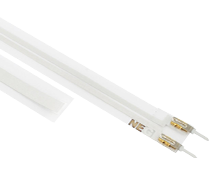
Buy Now

Buy Now

Buy Now
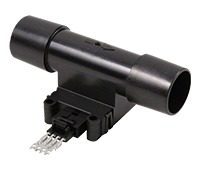
Buy Now
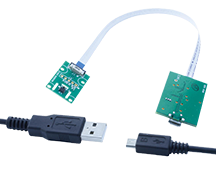
Buy Now
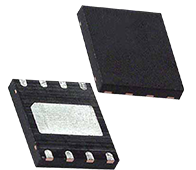
Buy Now
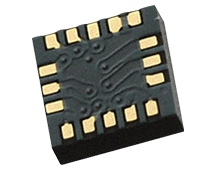
Buy Now

Buy Now

Buy Now
For more Biosensors products Shop Now
Test Your Knowledge
Sensors X
Are you ready to demonstrate your wearable BioSensors knowledge? Then take this 10-question quiz. To earn the Sensors X Badge, read through the module, attain 100% in the quiz, and leave us some feedback in the comments section.



Top Comments
-

will06
-
Cancel
-
Vote Up
0
Vote Down
-
-
Sign in to reply
-
More
-
Cancel
Comment-

will06
-
Cancel
-
Vote Up
0
Vote Down
-
-
Sign in to reply
-
More
-
Cancel
Children